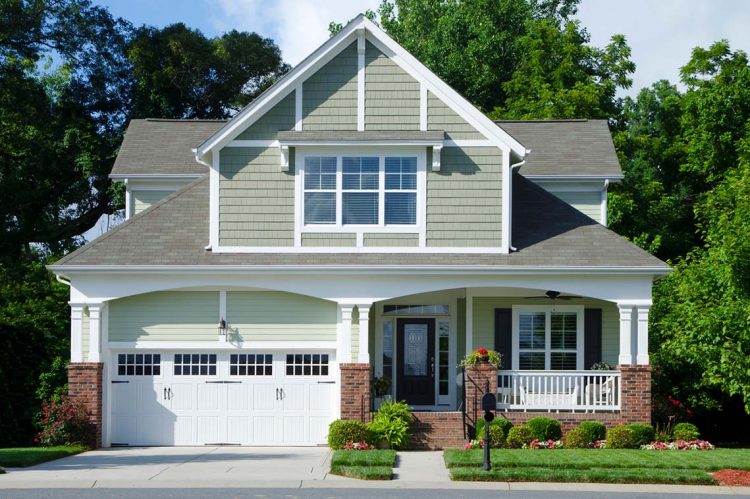Median home prices hit $405,000 for the first time ever in March, but according to the realtor.com® Monthly Housing Trends Report, there is some hope on the horizon for pandemic-era buyers. With demand beginning to moderate as some home shoppers are priced out of the market and new construction at near 16-year highs, inventory is expected to hit positive territory year-over-year this summer.
March 2022 Housing Metrics – National:
Median Listing Price:
Change from March 2021: 13.5% (to $405,000)
Change from March 2020: 26.5%
Active Listings:
Change from March 2021: -18.9%
Change from March 2020: -62.3%
New Listings:
Change from March 2021: -3.4%
Change from March 2020: -11.1%
Median Days on Market:
Change from March 2021: -11
Change from March 2020: -21
Key findings:
Home prices hit $405,000 with an increase in price reductions.
The median U.S. listing price grew to a new all-time high of $405,000 in March as prices rose 13.5% year-over-year, faster than is typical for this time of year, and about the same annual growth rate as last month.
At the same time, data shows the beginnings of softening demand and sellers responding to it. The share of homes having their price reduced increased slightly from 5.8% last March to 6.0% this year, but still remains 9 percentage points below typical 2017 to 2019 levels. Twenty-five of the largest 50 metros saw an increasing share of price reductions in March, compared to 18 in February.
Listing prices in the top 50 metros grew by an average of 9.1% in March over last year. Their price growth has been lower than other areas across the country, but much of this can still be attributed to new inventory bringing relatively smaller homes to the market this year. The median listing price per square foot in these large metros grew by 12.5% over the same period, not as high as, but close to, the national rate of 15.7%. Miami (+37.0%), Las Vegas (+35.2%), and Tampa, Florida (+32.0%) posted the highest year-over-year median list price growth in March. Austin, Texas homes showed the greatest growth in the share of homes with price reductions compared to last year (+2.9 percentage points), followed by Sacramento, California and Memphis, Tennessee (+2.3 percentage points).
Inventory declines lessen as some buyers are priced out
Nationally, the inventory of homes actively for sale on a typical day in March decreased by 18.9% over last year, a smaller rate of decline compared to the 24.5% drop in February. However, this moderation in active inventory is not a supply-driven improvement. In March, newly listed homes decreased by 3.4% year-over-year and sellers were still listing at rates 12.2% lower than typical 2017-2019 March levels.
The number of pending listings (listings that are at various stages of the closing process, but are not yet sold) has declined by 7.4% compared to last March, indicating that a moderation in demand is softening the rate of home sales. This is likely caused by the affordability one-two-punch of rising interest rates and all-time high listing prices. For buyers still actively searching for a home, this could provide some relief as competition declines. However, it indicates that some homebuyers may have put plans on hold, despite the fact that the current rental market offers little relief from high prices.
The inventory of homes actively for sale in the 50 largest U.S. metros overall decreased by 16.0% year-over-year in March, an improvement in the rate of decline compared to last month’s 22.1% decrease. Inventory declined over March 2021 in 44 out of 50 of the largest metros, but six metros saw inventory growth, up from four last month: Riverside, California (+17.8%), Sacramento (+7.6%), Kansas City (+6.0%), Austin (+3.9%), Detroit (+3.5%), and Phoenix (+0.4%). Eight metros also saw the number of newly listed homes increase compared to last year, led by Rochester, New York (+7.2%), Detroit (+6.7%), and Memphis (+5.4%).
Homes consistently spend less time on the market than previous years
The typical home spent 38 days on the market this March, which is 11 days less than last year. Homes spent 29 fewer days on the market than typical March 2017-2019 timing. However, while homes are selling more quickly than last year, the gap has been shrinking as demand moderates. Last month, homes spent 17 days less on the market than the previous year. In March, the gap narrowed down to 11 days.
In the 50 largest U.S. metros, the typical home spent 31 days on the market, and homes spent 8 fewer days on the market, on average, compared to March 2021. Among larger metropolitan areas, homes saw the greatest yearly decline in time spent on market in the southern metros of Miami (-32 days), Raleigh, South Carolina (-19 days), and Orlando, Florida (-19 days). Only Buffalo, New York saw time on market increase compared to last year (+2 days).
The takeaway:
“Despite the $405,000 price tag, March data reveals we are starting to take some steps towards a more balanced market,” said Danielle Hale, chief economist for realtor.com®. “Buyer demand is moderating in the face of high costs, and we’re beginning to see more homeowners take price cuts on their listings and overall inventory declines lessen in response. Assuming all these factors and new construction hold steady, we could begin to see inventory increases this summer—welcome news for buyers who have endured pandemic home shopping and can continue their journey despite higher buying costs.
“For buyers currently in the market, there’s good reason to aim to find a home before interest rates increase further. But if it takes longer than a few months, don’t give up hope, as there may be more to choose from in the summer months.”











